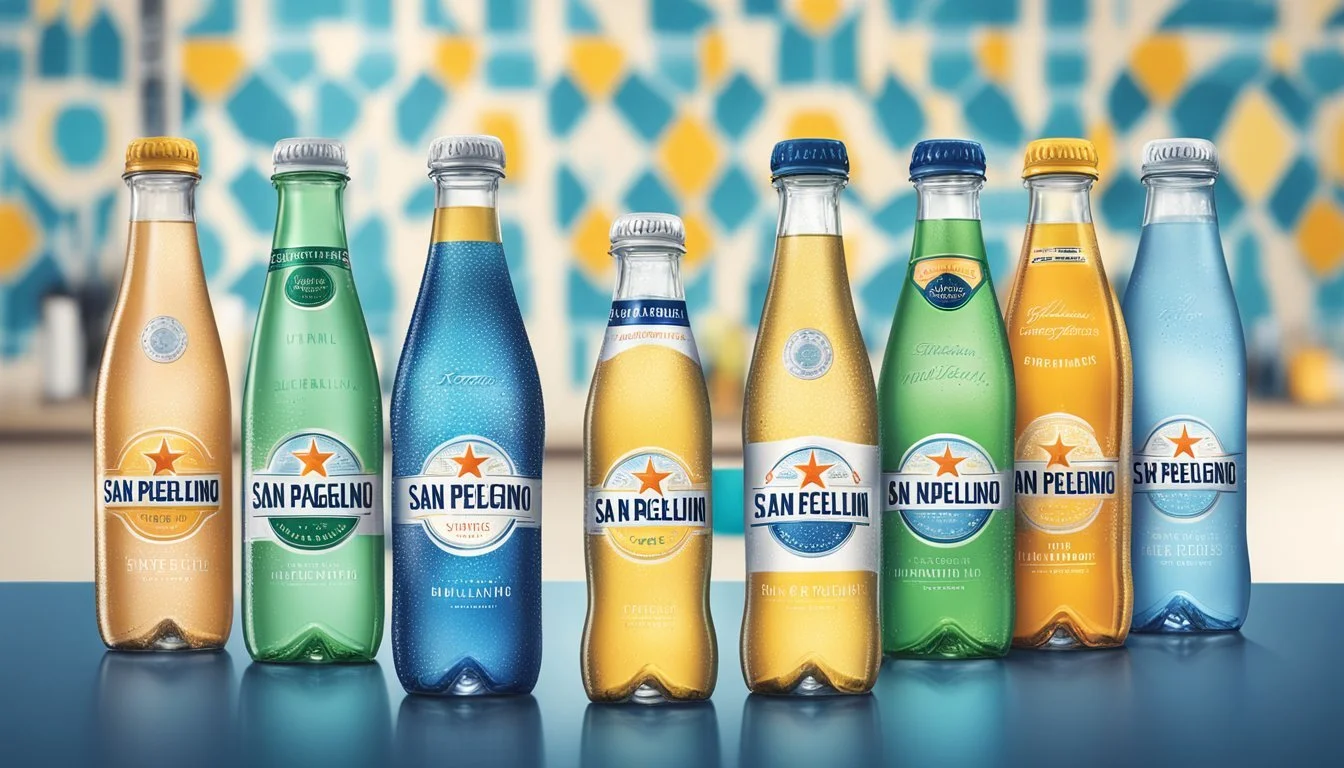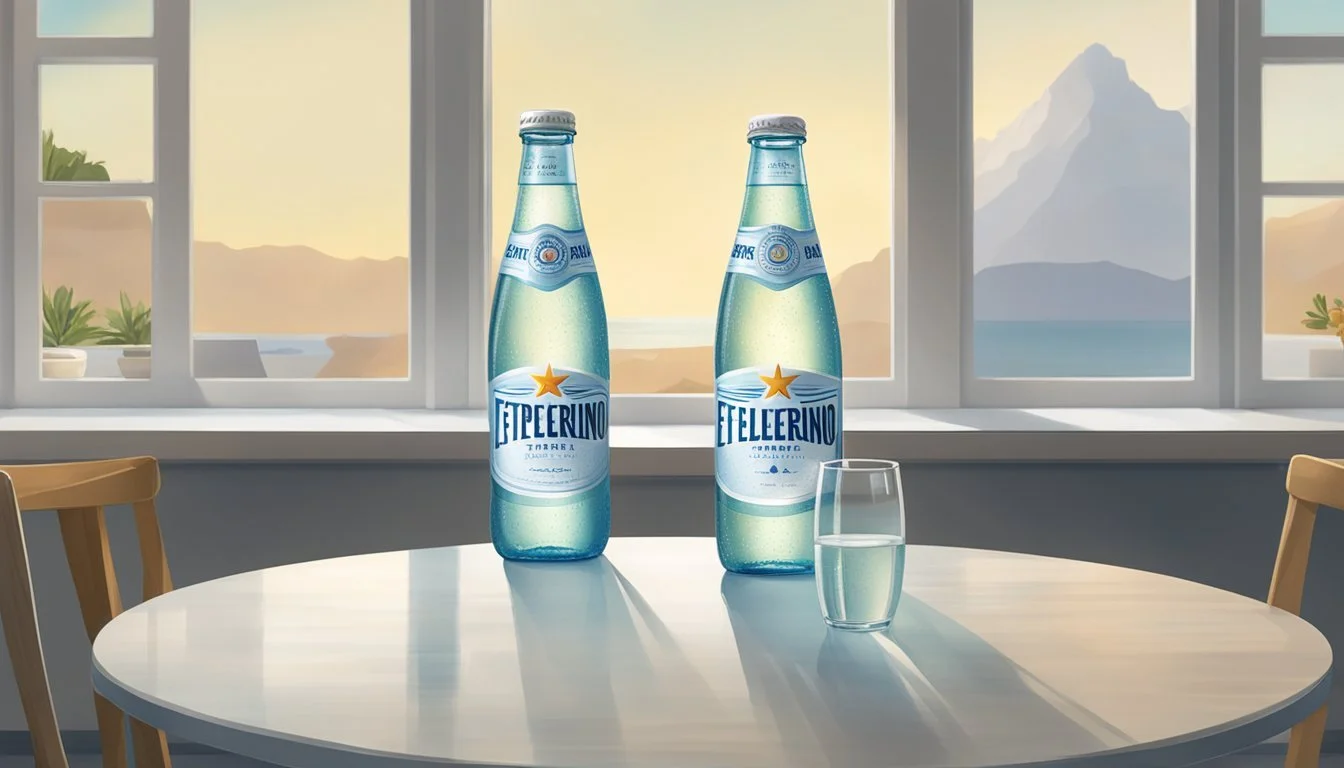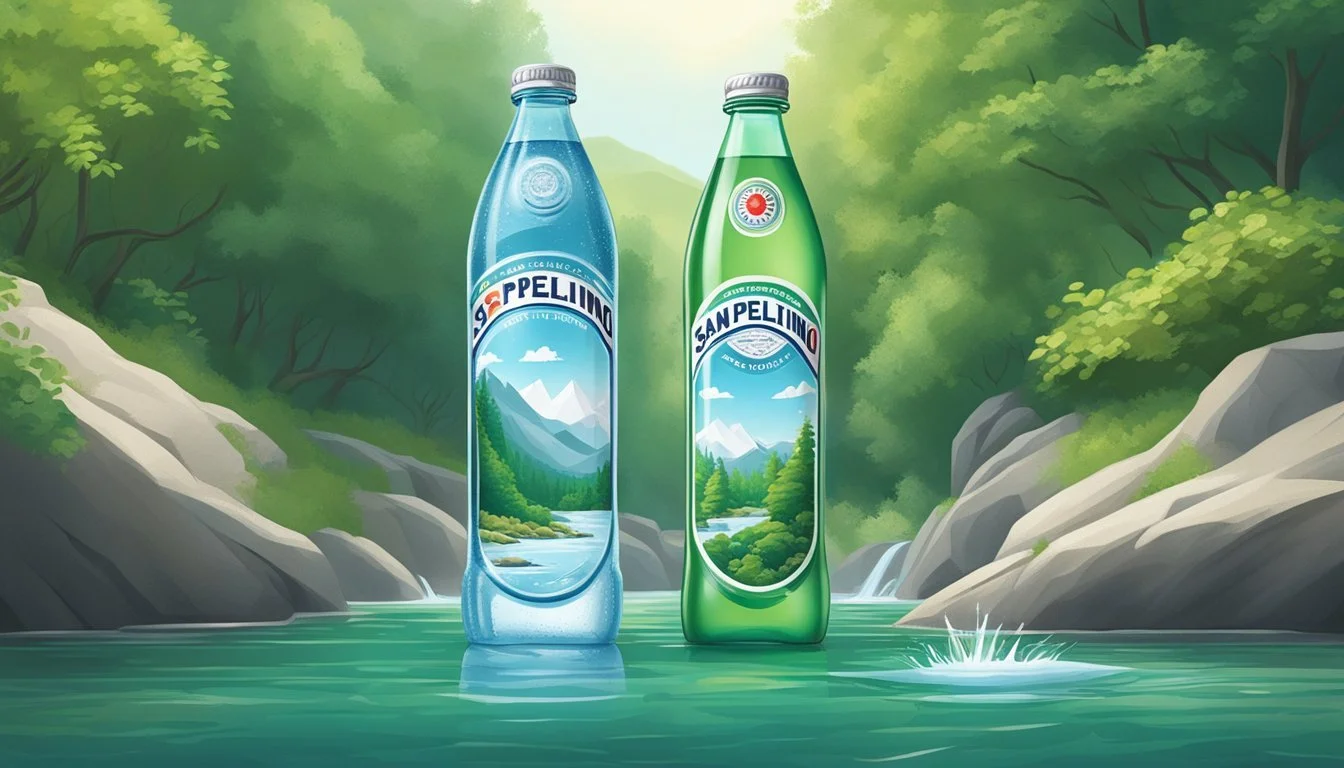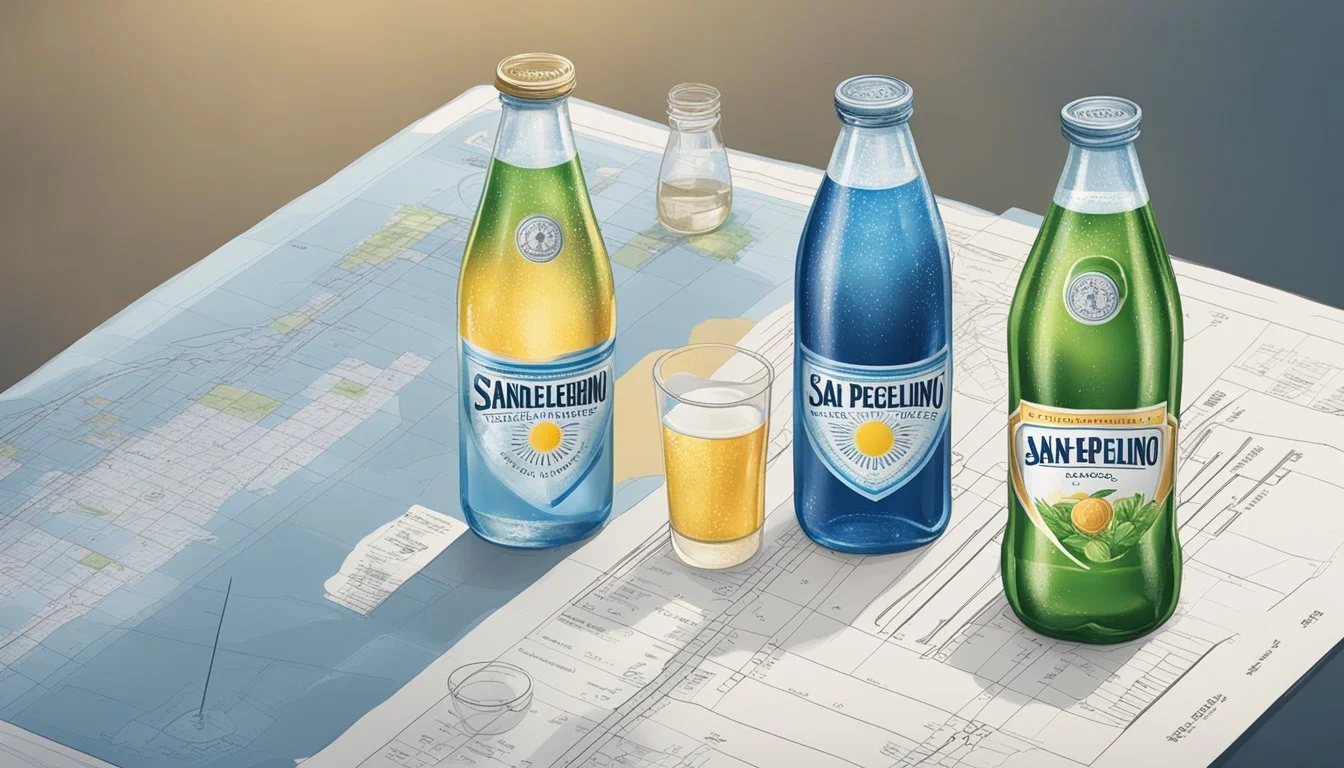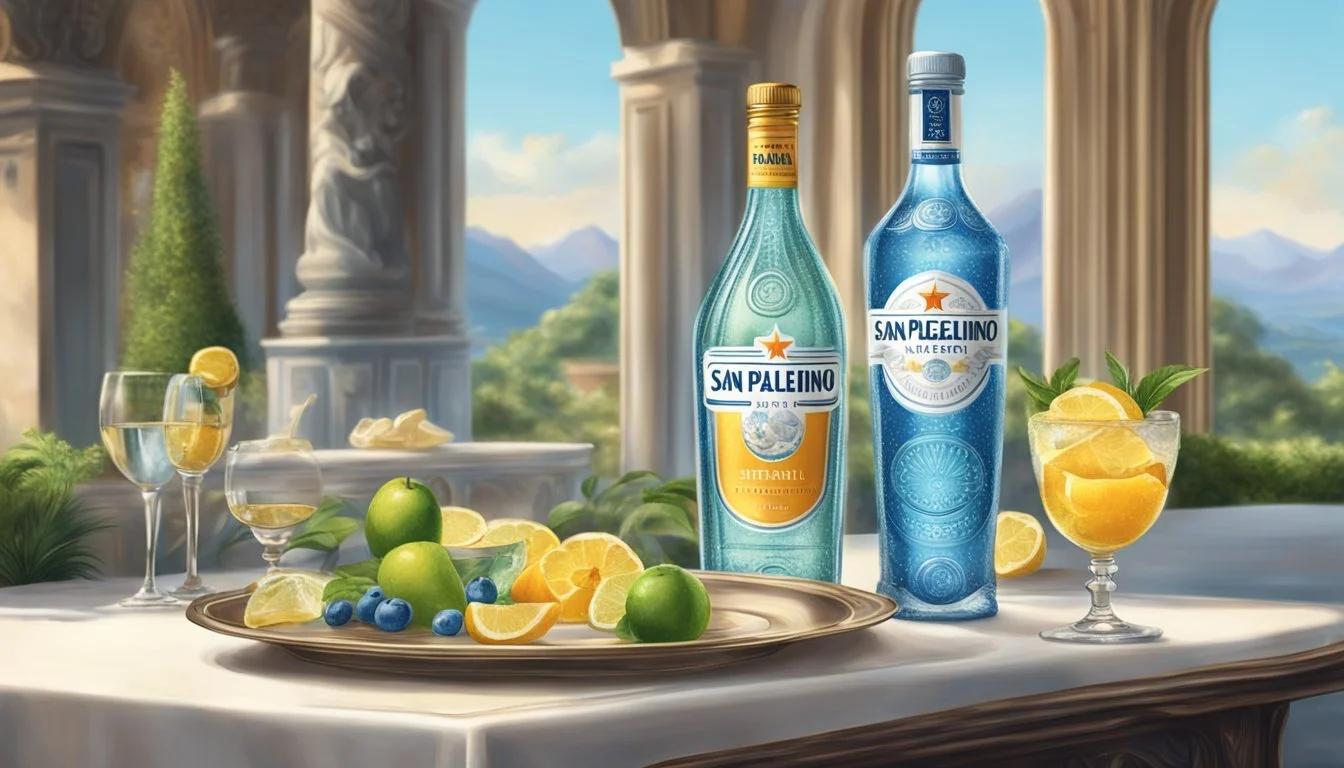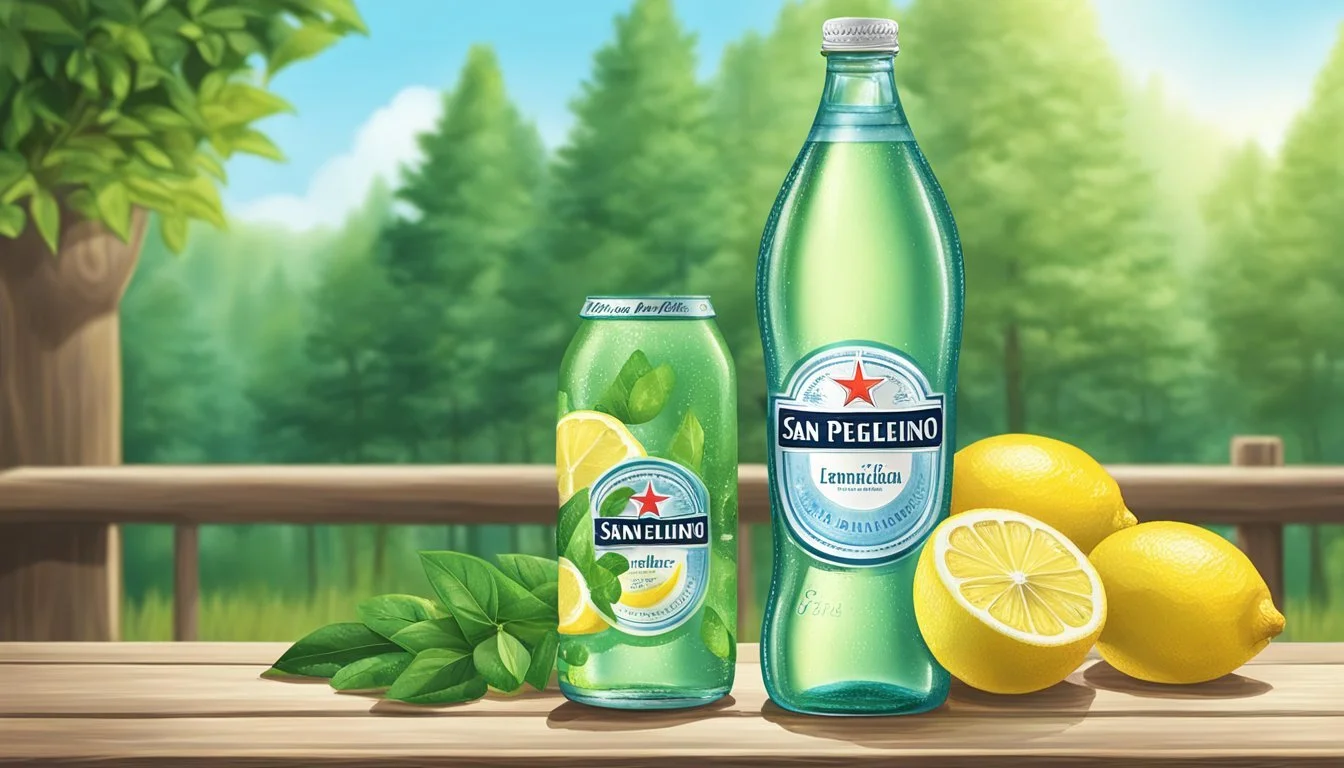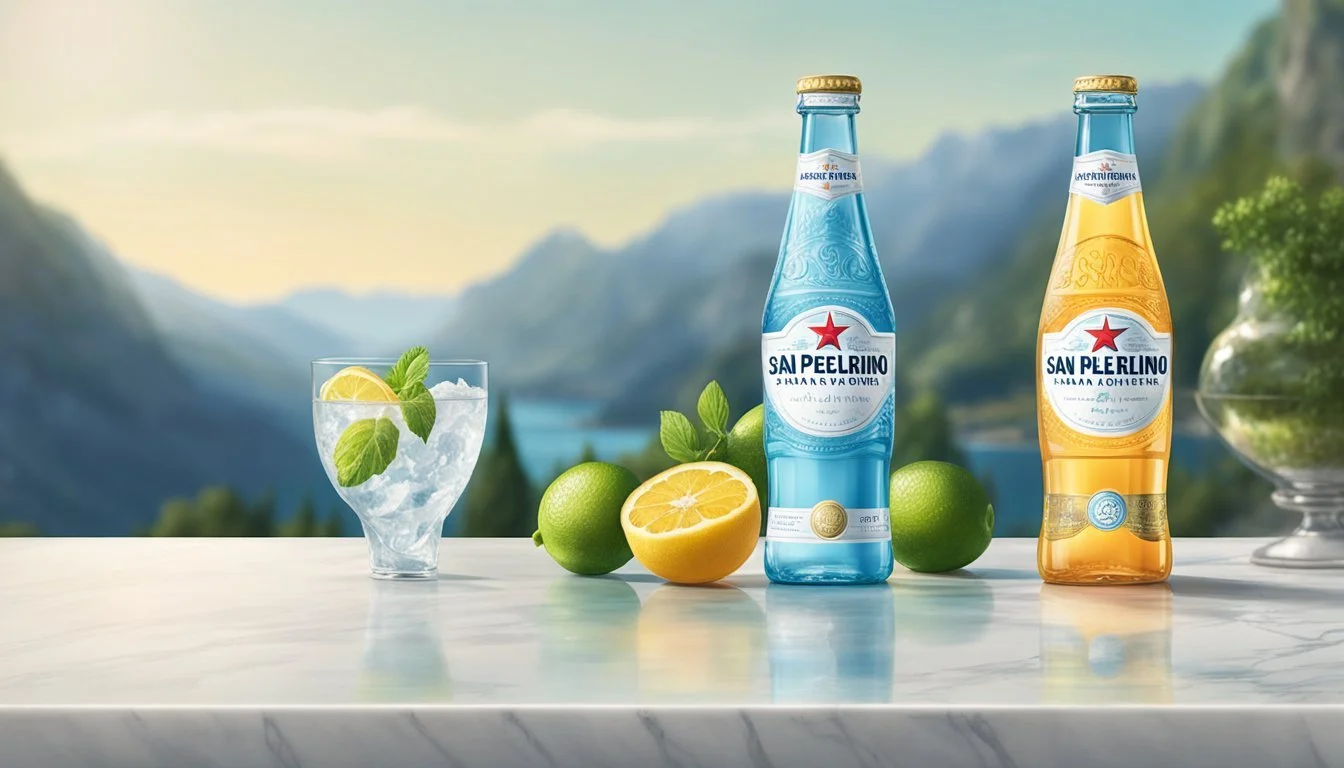Eternal vs. San Pellegrino
Comparing Quality and Taste of Bottled Waters
When assessing bottled water, two brands often come up in the conversation: Eternal and San Pellegrino. Both have established themselves as premium water choices among consumers who seek more than just hydration from their bottled water. Eternal, known for its naturally alkaline artesian water, boasts a source from the Shasta-Trinity Alps in California. It presents itself as not only a beverage but a health-oriented product due to its mineral content and alkalinity.
San Pellegrino, on the other hand, has a heritage steeped in Italian tradition. Sourced from San Pellegrino Terme in Bergamo, Italy, this brand is synonymous with fine dining and is often seen gracing tables in upscale restaurants. Its sparkling mineral water is appreciated for its ability to complement meals and cleanse the palate with its distinct taste and effervescence.
Choosing between Eternal and San Pellegrino comes down to personal preference and intended use. While Eternal caters to those looking for potential health benefits from their water, San Pellegrino serves those seeking a sophisticated addition to their dining experience. Both brands have earned their reputation through their unique sources and the quality of their product, each appealing to different aspects of what consumers desire from bottled water.
History and Origin of Bottled Water
Bottled water's evolution reflects people's perennial quest for purity and taste, driven by the distinct sources and origins of the water they consume.
Emergence of Bottled Water
Bottled water has roots extending back centuries when communities first recognized the healing and therapeutic properties of certain springs. Initially, water from these springs was consumed at the source for health benefits. As societies advanced, the desire and capability to transport this water emerged. This shift allowed individuals to enjoy the benefits of pristine natural spring water away from its source.
Significance of the Source
The source of bottled water is pivotal, as it distinguishes one brand from another and often determines the water's unique mineral content. Spring water is collected as it flows to the surface or via a borehole that taps into the aquifer feeding the spring. For instance, Evian water originates from a glacial spring where the water is naturally filtered through layers of protected underground rock. Similarly, Acqua Panna claims its water flows for 13 years through an aquifer before being bottled, maintaining its purity.
Source Type Characteristics Natural spring Filters through geological formations; mineral-rich Mineral water Contains various minerals; may be effervescent Tap water Treated municipal water; widely available
The Rise of Sparkling Water
Sparkling water has gained widespread popularity, encompassing brands like San Pellegrino. Such water is often sourced from regions with significant volcanic activity, resulting in a natural carbonation process. For example, San Pellegrino water originates from the Italian Alps, and the water travels through limestone and volcanic rocks, becoming naturally enriched with mineral salts before emerging at the surface.
Branding and Market Presence
In comparing Eternal and San Pellegrino bottled waters, it is imperative to examine how each brand positions itself in the market and their presence among competitors in both domestic and international spheres.
Eternal Water Brand Overview
Eternal Water is noted for its source, naturally alkaline spring water that is touted for its purity and natural filtration through layers of rock. Unlike many brands, Eternal emphasizes its water's journey through this natural process as a key selling point, differentiating itself within the bottled water market.
San Pellegrino Brand Overview
San Pellegrino stands out with its esteemed heritage, tracing back to the 12th century. Originating from the Alps in Italy, this brand is distinguished by its significant international presence and is associated with dining elegance. It has a strong market share, competing closely with brands like Perrier.
Competing Sparkling Water Brands
In the wider landscape of sparkling water brands, key players include Perrier, La Croix, Bubly, and Spindrift. Many of these brands, along with San Pellegrino, have crafted niches in both flavor variety and aesthetic appeal to cater to diverse consumer preferences.
Perrier: Known for its green bottle and distinct taste, it holds a substantial share of the market.
La Croix: Favored for its array of flavors and has a dedicated customer base.
Bubly and Spindrift: Both are emerging brands that have carved out their own loyal followings through unique marketing strategies.
Domestic and International Brands
While San Pellegrino enjoys international acclaim, other domestic brands like Poland Spring, Dasani, Aquafina, and Pure Life dominate the U.S market in terms of volume. Brands such as Deer Park, Arrowhead, and Zephyrhills also maintain a strong regional presence. In contrast, Eternal positions itself as a premium brand with wider distribution, but less market penetration compared to pervasive brands like Dasani and Aquafina.
Smartwater and Core Hydration: Focus on electrolyte-enhanced offerings to attract health-conscious consumers.
Seltzer: Becoming increasingly popular, competing directly with traditional sparkling water brands.
The branding efforts and market presence of both Eternal and San Pellegrino are tailored to their unique selling propositions and target audiences. They stand alongside other established and growing brands in the bustling industry of bottled and sparkling waters.
Physical and Chemical Properties
When discerning the quality and benefits of bottled waters like Eternal and San Pellegrino, it's essential to evaluate their physical and chemical properties. This includes understanding the varying mineral contents, the level of carbonation, and their pH levels, all of which play a role in the taste, health impact, and overall experience of consuming these waters.
Mineral Content and Health Benefits
Both Eternal and San Pellegrino waters are rich in minerals, which are imparted from their natural sources. Eternal water, which is natural alkaline spring water, contains minerals like calcium, magnesium, potassium, and sodium; these electrolytes are vital for hydration and various bodily functions. On the other hand, San Pellegrino, known for its signature mineral blend, includes bicarbonate, chloride, as well as calcium and magnesium. These minerals contribute not only to the crisp and refreshing taste but may also offer health benefits like supporting bone health and aiding in digestion.
Carbonation and Bubbliness
San Pellegrino is a sparkling mineral water infused with carbon dioxide under pressure to create fizziness. Its fine bubbles are a result of the natural carbonation process complementing its minerality. In comparison, Eternal does not naturally contain carbonation; instead, it offers a still water experience, which means absence of the effervescence found in San Pellegrino.
Acidity, pH Levels, and Alkalinity
The pH level of water can influence its taste and how it interacts with the body. Eternal water is naturally alkaline with a pH typically over 7.5, which may contribute to its smooth taste and its appeal to those seeking a higher pH level. Conversely, San Pellegrino has a pH level around 7.7, slightly above neutral, due to its natural mineral content; this slight acidity lends a subtle tartness to the water's flavor. Both waters maintain a pH balance that suits the preference for a more neutral to slightly alkaline taste profile, with the potential of countering the effects of acidic dietary components.
Through the examination of these properties, one can appreciate the distinctions and potential advantages of each brand that cater to varying consumer tastes and health considerations.
Sensory Experience and Consumer Preferences
Choosing between Eternal and San Pellegrino may come down to individual sensory experiences and consumer preferences, particularly in the realm of taste and available flavor varieties.
Taste Profile Comparison
Eternal offers naturally alkaline spring water with a smooth and clean taste, due to its filtering through volcanic rock which may enrich the water with minerals. San Pellegrino, on the other hand, is a sparkling mineral water well-known for its fine bubbles and subtle mineral nuances contributed by the groundwater of the Italian Alps. Consumers often perceive San Pellegrino as having a more distinctive taste compared to the neutral flavor profile of Eternal.
Flavor Varieties
When it comes to flavored options, San Pellegrino showcases a variety of flavored sparkling waters, incorporating natural flavors such as lemon and orange. On the other side, Eternal typically does not feature flavored varieties, as it focuses on its natural composition and taste. Here is a breakdown of San Pellegrino's popular flavored sparkling water options:
Lime: A zesty, tangy flavor that compliments the carbonation.
Grape: A sweet and fruity twist to the mineral water base.
Others: San Pellegrino offers additional flavors, including lemon and orange, allowing consumers to choose according to their flavor preferences.
Health and Hydration
In the context of bottled water choices, it is essential to discuss the specific health benefits and hydration effectiveness associated with mineral supplementation and the type of water—still or sparkling.
Hydration and Mineral Supplementation
Mineral water, whether from Eternal or San Pellegrino, typically offers a unique blend of minerals like calcium, magnesium, and potassium. These naturally occurring electrolytes are vital for maintaining electrolyte balance in the body. For example, San Pellegrino contains significant levels of magnesium, which is important for proper digestion and nutrient absorption.
Calcium: Essential for bone health and muscle function.
Magnesium: Supports energy production and enzymatic activity.
Potassium: Key in muscle contractions and nerve transmission.
The presence of these minerals can enhance hydration by facilitating water absorption in the body. They perform critical functions, contributing to overall health and well-being.
Health Considerations of Sparkling vs. Still Water
When comparing sparkling water to still water, one should consider the additional effects of carbonation. Sparkling water, like San Pellegrino, has been associated with benefits for digestion due to its carbonation levels, which can improve swallowing ability and increase feelings of fullness. However, for some individuals, carbonated waters might also lead to increased risk of bloating and gas.
Health concerns related to sparkling water:
Potential increased risk of bloating
Some individuals might experience acid reflux
Still water, like Eternal, is free from carbonation and thus does not have these associated risks, making it a preferable option for those with sensitive digestive systems. It provides hydration in its most basic form, often preferred for general consumption and during physical activity.
Both Eternal and San Pellegrino offer hydration and mineral supplementation. One's choice may depend on personal health considerations, preference for bubbly or flat water, and nutritional needs.
Environmental Impact and Sustainability
When assessing the environmental impact and sustainability of bottled water brands like Eternal and San Pellegrino, one must consider the bottling process, carbon footprint, source sustainability, and water rights. These factors are critical in understanding how each brand affects the planet.
Bottling Process and Carbon Footprint
The production of bottled water involves sourcing from spring water or aquifers, purification, filtering, and bottling. The carbon footprint of this process is substantial due to the energy required for extraction, purification, and transportation. For instance, it takes approximately three times as much water to produce a plastic bottle as it can hold. This does not include the energy used in transporting the bottled water to various markets, which adds to the overall carbon emissions. The Environmental Protection Agency (EPA) has set regulations to minimize the environmental impact, but the carbon footprint remains a significant concern.
San Pellegrino, according to provided data, comes in recyclable plastic bottles, which is a vital step towards sustainability. However, recycling rates vary by region, and not all bottles are recycled, contributing to environmental pollution.
Source Sustainability and Water Rights
Both Eternal and San Pellegrino must sustainably manage their water sources to ensure long-term availability. Over-extraction of spring water and groundwater can lead to depletion and adverse environmental effects, such as harm to local ecosystems. Companies are responsible for maintaining a balance to prevent overuse of the aquifer sources they depend on.
Water rights are also a contentious issue, as local communities and ecosystems may be affected by the large-scale extraction of water. Contaminants introduced through various land uses can affect the purity of the source, which requires more rigorous purification processes to meet safety standards. Both brands must navigate these issues carefully to maintain a sustainable supply of water for their products.
Economic Aspects and Pricing
When comparing Eternal and San Pellegrino bottled water brands, the economic factors such as price point and market positioning are critical for consumer choices and brand success.
Price Point and Consumer Value
Eternal Water is often perceived as a premium product because it boasts naturally occurring electrolytes and minerals from its source in the Shasta-Trinity Alps. This natural purification process adds to the cost, rendering Eternal typically more expensive than some of its competition. The price for a liter ranges, which can be deemed steep by consumers looking for value.
In contrast, San Pellegrino, coming from the Italian Alps, has established a strong presence in the market. Its price is reflective of its positioning as a premium sparkling mineral water often found in restaurants and hotels. A 750ml bottle can be priced at a premium, aligning with its brand reputation.
Brand Positioning in the Market
Eternal has positioned itself as a purveyor of naturally purified alkaline water with a unique mineral content. Its focus on the natural origins and health aspects of the water appeals to health-conscious consumers.
San Pellegrino has historically been positioned as an icon of Italian luxury. The brand's signature sparkling mineral water has been synonymous with fine dining, further solidified by its strong market presence across various countries.
In terms of competition, both brands vie with national and international bottled water companies. However, they target different segments of the market, with Eternal appealing to those prioritizing health and natural purity, and San Pellegrino targeting those who value a touch of luxury in their dining experience.
Lifestyle and Cultural Impact
Eternal and San Pellegrino are not just brands; they reflect varying consumer trends and the integration of bottled water into lifestyle and dining cultures. These brands have had a significant impact on dining experiences and consumer choices, influencing the way people think about and consume water.
Water in Fine Dining and Culinary Circles
In fine dining, the choice of water is often as critical as the selection of wine. San Pellegrino has positioned itself as a staple in this elegant setting, often served in glass bottles by sommeliers. Its carbonation adds a palate-cleansing effect, deemed an ideal companion to gourmet meals. The brand's association with Food52 and Food and Wine further cements its status in culinary circles. Eternal, known for its naturally high pH and still water, also has its place, particularly among those preferring non-carbonated options.
Consumer Behavior and Trend Influence
The rise of sparkling water, including seltzer and flavored carbonated water, has shifted consumer behavior significantly. San Pellegrino, with its variety of flavors, has become a trendy choice both in local grocery stores and within home fridges. Eternal's appeal comes through its image of purity and healthfulness. Their branding caters to an audience looking for high pH levels, which some associate with specific health benefits. Both brands have adapted to consumer trends, but San Pellegrino's carbonated water options have secured a particular niche amongst consumers seeking a sophisticated alternative to still water or sugary beverages.
Future Trends and Innovations
In the realm of bottled water, two key areas signal significant change: advancements in purification technologies and shifts in market dynamics due to emerging water brands.
Advancements in Purification Technologies
The bottled water industry continually invests in purification technologies to ensure the highest quality of water. Technologies such as reverse osmosis and ionization are at the forefront, aiming to remove impurities and improve taste. Eternal Water, for example, prides itself on a natural purification process that includes filtration through layers of rock which imbue the water with electrolytes and minerals. In contrast, companies like San Pellegrino focus on carbonated mineral water that requires a delicate balance of purification to maintain its signature mineral content.
Emerging Water Brands and Market Dynamics
Competition in the bottled water market is intensifying with new players disrupting the status quo. Newer brands are differentiating themselves by sourcing from unique locations and focusing on the narrative of purity and ecology. Acqua Panna, a still water companion of San Pellegrino, is gaining attention for its taste and heritage, which stems from its domestic Tuscan source. Moreover, ionized and alkaline waters are carving out a niche, promising health benefits beyond hydration. With these shifts, the traditional giants may need to innovate or form alliances to maintain market share.
Comparative Analysis
This section provides a focused look at San Pellegrino and Eternal bottled waters, evaluating factors like taste, carbonation, and price through direct comparison and consumer feedback.
San Pellegrino vs. Eternal - A Thorough Comparison
Taste: Taste is a major distinguishing factor between bottled waters. San Pellegrino is renowned for its crisp taste and its strong, yet balanced carbonation, which often receives positive feedback from consumers. Eternal water is naturally alkaline, which imparts a smooth taste that some consumers prefer for its subtlety and lack of carbonation.
Carbonation:
San Pellegrino: Recognized for its significant fizz, often seen as more effervescent than its rivals.
Eternal: Not carbonated, differs from San Pellegrino by providing a still water experience.
Price: Pricing varies by location and packaging, but generally, San Pellegrino is placed within the premium segment of bottled waters. Eternal often has a price point that is competitive, aiming to make naturally alkaline water more accessible.
Consumer Taste Tests and Reviews
When considering consumer reviews and taste tests, both brands have their advocates. San Pellegrino often excels in tests that favor sparkling water, while Eternal is commended for its natural minerality and taste consistency.
San Pellegrino: Reports from blind taste tests suggest that many people prefer San Pellegrino over other carbonated brands due to its level of fizz and mineral content.
Eternal: While Eternal does not participate directly in carbonated water taste tests, reviews note its unique mineral profile and consistent quality due to its source.
In terms of consumer preferences, some align with San Pellegrino for its traditional, bubbly texture, while others lean towards Eternal for its smooth and clean taste. Pricing can also influence consumer choices, with cost-conscious customers possibly favoring Eternal over the higher-priced San Pellegrino.
Conclusion
The assessment of Eternal and San Pellegrino waters hinges on critical parameters of health benefits, taste preference, price, and the unique qualities of bottled and sparkling water.
Final Thoughts on Eternal vs. San Pellegrino
Eternal Water, known for its natural electrolytes and high pH level, purportedly offers hydration with a health-centric approach. It's sourced from natural springs which may add to the mineral content, potentially affecting both the health impact and the flavor profile. The price of Eternal Water varies depending on the region and outlet, but it is often positioned as a premium product.
San Pellegrino, conversely, stands out with its signature sparkling water, which carries a distinct taste due to its inherent minerals and added carbonation. Historically connected with wellness practices, it combines health considerations with a gourmet experience. The brand's reputation is anchored in its long history and association with fine dining, which may influence a consumer's preference despite its mid-range pricing strategy.
Both brands present compelling choices depending on whether a consumer prioritizes still or sparkling water, values the taste of natural electrolytes and alkalinity, or seeks a specific price point. The decision between Eternal and San Pellegrino ultimately rests on individual priorities and the specific context of consumption, whether for daily hydration or a culinary accompaniment.


